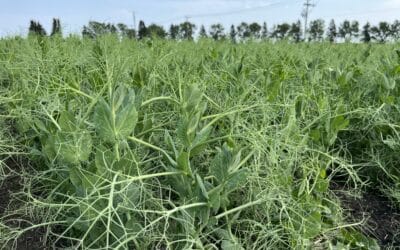Though biological products haven’t always had a spotless reputation, there’s a new reputation on the horizon for them.
When you think of a biological, what’s the first thing that comes to mind? If we were writing this 30 years ago, the first term that might pop in your mind would be: “snake oil”. But today, biologicals are considered a huge step in the right direction for sustainability, as well as crop growth and crop protection.
All they needed was an image change, but why?
“I once read a paper that reviewed all the label claims that biostimulants make, and I think that as it relates to biologicals as a whole, some of them are pretty unbelievable,” says Holly Little, director of R&D for Acadian Plant Health. “Increasing soil nutrient reserves by 3,000 per cent, detoxifying heavy metals, cutting operational costs, increasing natural plant toxins… I don’t know if that’s supposed to be good or bad. But it’s easy to see from those claims that not only are they unbelievable, but they’re not based in science.”
Because of those early claims about biostimulants and biologicals, Little says customers became skeptical of the products at the time — and rightfully so. But, the industry is now focused on correcting those misconceptions with science-based facts and proven trials.
“One of the things I’ve seen over the last 30 years is the biological industry has improved threefold,” says Vince Wertman, technical sales manager of North America, Agrauxine by Lesaffre North America. “As an example, a rhizobium inoculant in the 90s didn’t have a long shelf life on the seed — we were actually applying peat or dirt into plants, which is inconvenient for growers. Our advancements in our compute power and the ability to increase our genetic composition when it comes to rhizobium products have greatly improved the efficacy of the products.”
Twenty years later, not only has shelf-life improved for biologicals, but Wertman says that now products can be pre-applied by seed companies for growers to use as well as better genetics that have improved response in the field.
Not only have the products worked to improve their image, but Little says biologicals really should be considered a major tool in a grower’s toolbox these days.
“Whether it’s a biostimulant or a living biological, they can do wonderful things and they’re available for many different purposes now,” Little says. “If a grower has a need for anything that a biological product can do, it should definitely be considered. One of the really great things about biologicals is that they aren’t so different from traditional chemistries — they can have synergy or an additive effect with those traditional chemistries.”
But, even with a new image and status in the seed sector, there are still quite a few misconceptions that appear around biologicals the industry is working to correct.
One, in particular, is that there’s often no distinguishment between different biologicals — that can make it difficult to understand what type of product a customer is using. Is it a living product? Is it a biorational or derived from biology?
That miscommunication between product type makes for some confusion in the field. From Wertman’s experience, there’s often a miscommunication or misunderstanding of how to apply a product — the question becomes, do I put it on the seed, in the seed drench, in the furrow, and spray a biological on it when the plant comes out of the ground?
“Our live biological organisms are endophytic, which means they live inside the plant,” he says. “They give us a season-long response and will grow and develop in a way that some of the nonliving products can’t do. Understanding what the product is, what mechanisms it uses and how it responds to the plant is important.”
For Little, she experiences the same battle.
“Products are different,” she says. “We know seaweed extracts aren’t the same as one another. They can have different raw materials used, different extraction technology and therefore have different bioactives in them. That means, the effect of one won’t be the same as another.”
Making sure you’re not only taking the steps to understand the products yourself, but you’re working with a company that understands the nuances and differences between formulations, is important for ensuring success in the field.
Related Articles
Organic and Conventional Farming Aren’t as Different as You Think





